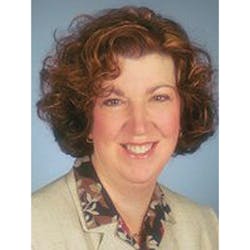In the never-ending war on bugs, détente between the clinical blocs of a healthcare organization can make a considerable difference in the cleanliness and sterility of a facility as well as affect patient outcomes.
Sometimes the coalition between clinical blocs can be occupationally hierarchical, as in the more typical Sterile Processing & Distribution (SPD) reporting to Surgical Services. Even then, there’s no guarantee or inclination that the two departments can “get along” with mutual respect, trust and understanding, the trinity of organizational harmony. SPD counts the Operating Room (OR) as the customer; by and large, the OR rarely lets them forget it.
As for the atypical SPD and Infection Prevention (IP), however, the professional and relational canvas remains fresh, and for the most part, blank.
Much of the industry recognizes the inherent ties between SPD and the OR, even if SPD reports to Supply Chain instead of Surgical Services. Yet few raise eyebrows at the recommendation or even suggestion that SPD align or merely ally itself with IP. After all, the two areas/departments share common aims and goals – reducing, if not preventing, harmful bacterial, microbial, viral existence and spread throughout an organization.
Initiating any kind of relationship between the two elicits some surprise in that expectations about who should approach whom are not as cut-and-dry as many might surmise.
There’s some common-sense logic behind the belief that IP, as the clinically trained microbial experts, should reach out to SPD. But that’s not necessarily universal among seven SPD-IP experts with whom Healthcare Purchasing News spoke about collaboration between the two. In fact, their observations reached near-parity with four favoring IP reach out to SPD and the remaining three flipping the order.
Making the rounds
“There is no wrong answer here,” Homan insisted. “Infection Prevention and Sterile Processing should work together closely to meet their mutual goal of patient safety. The Infection Preventionist should take every opportunity to develop strong relationships with the folks in the sterile processing department and spend time in the department to understand the workflow, processes and challenges with an eye to help improve not only infection prevention, but also operational efficiency. The Sterile Processing Manager should consider the Infection Preventionist as a strong ally who can help make the business case for new products and processes that can improve the decontamination and sterilization process and department throughput. SPD and IP department heads should meet regularly to update each other on projects and priorities.”
For Marc-Oliver Wright, MT(ASCP), CIC, FAPIC; Clinical Science Liaison, Central Region, PDI, Infection Prevention reaching out to SPD simply represents good business and operational efficiency.
“First and foremost, it is in IP’s interest to forge that relationship early on,” Wright noted. “Failings in SPD that are identified during the accreditation process usually fall under the IP standards. Outbreak investigations involving the perioperative or procedural space have to include SPD. It makes sense to build relationships with the subject matter experts before there’s a problem. While I favor IP approaching SPD, the fact is that anyone can and everyone should work towards furthering the partnership so if IP is not reaching out, then SPD should.”
“Sterile processing is the first link in the infection prevention chain,” Brewer insisted. “Improperly or inadequately cleaned, disinfected and sterilized instruments can introduce pathogens into the operating room, increasing the risk of a patient acquiring a surgical-site infection (SSI). Inadequacies in SPD typically fall under standards for IP, and outbreaks involving operating or procedural space must always include SPD. Regardless of which department initiates the relationship, it is imperative that the two work together to ensure the highest levels of cleanliness and disinfection to help curb the spread of infections.”
SPD and IP should understand and acknowledge that the two actually are united under a common cause and purpose, according to Lynn Burbank, DNP, RN, CRNP, Global Senior Manager, Infection Prevention, Olympus America, Inc..
“The first step in building a relationship between Infection Prevention and Control (IPC) and Sterile Processing (SPD) is to acknowledge the underlying principle of patient safety first,” Burbank noted. “IPC and SPD bring unique skills to their roles; collaboration between the teams can build on each department’s strengths in ensuring safe, high-quality care for their patients. It is not a matter of who should approach first, but rather an alliance between professionals.”
Burbank points to the service providers or the Endoscopy Support Specialists (ESS) at Olympus America International (OAI) who serve as the “face of product support, education and training in SPD operations,” as exemplifying the IP-SPD relationship.
“These professionals collaborate with the IPC team in order to bring the voice of patient safety to providers,” she said. “Examples of this partnership include: Development of tools such as the ‘OnTrack’ forms to document customer training of how to correctly reprocess a device; document on-site observation of SPD departments to assess device usage from point of care through reprocessing, with follow up to review results; and the availability of the IPC team to address customer questions about compatibility and efficacy of CDS products.”
The ESS teams also function as “boots on the ground” assistance for providers, Burbank continued. “They extend the voice of IPC to clinical customers,” she added. “Their role is to provide care and handle education to reduce repairs, lower equipment repair costs and increase equipment ‘uptime.’ ESS’ knowledge of the devices and reprocessing are an asset as they have in-depth understanding of the product portfolio and serve as the ‘voice of the customer’ when conveying concerns about efficacy or compatibility between devices and reprocessing methods.”
“There’s no right or wrong answer when it comes to who should seek out a relationship between IP and SPD, and I frequently challenge both sterile processing and infection prevention professionals to seek out each other to develop a strong partnership between the departments,” VanHee urged. “From my experience, some of the best relationships between IP and SPD have been established by infection prevention taking a genuine interest in how they can support the sterile processing department.”
“The Infection Prevention leadership is very familiar with expectations from regulatory agencies, such as The Joint Commission and CMS, especially related to the recent changes and expectation [around] COVID-19,” Pate told HPN. “The development of a partnership between Infection Prevention and SPD could greatly benefit both departments. By working together, the Infection Prevention leadership can take the newly developed guidelines/standards and develop new or updated policies and procedures which meet the guidelines benefiting both departments. By reaching out to form partnerships, Infection Prevention will increase the communication between departments, which may result in positive relationships for the future.” Pate also serves as a member of HPN’s editorial advisory board.
Seth Hendee, CRCST, CIS, CHL, CER, CSPDT, CFER, Clinical Education Coordinator, SPD, Healthmark Industries Co., actually laments IP extending a hand to SPD as an “unfortunate” circumstance. Why? It’s an attitude thing.
“Many in SPD do not feel empowered to reach out beyond the walls of their department, even though SPD activities often affect a facility far beyond the Operating Room,” Hendee acknowledged. “Central Service activities, especially when centralized across a facility, have a huge influence on infection prevention. IPs must recognize and understand how crucial SPD functions are to complying with survey standards. Starting a relationship or strengthening an existing relationship between these two important departments will add quality to any organization.”
SPD should lead the way
“SPD will find that we have a willing partner who shares many of our objectives in fighting infection,” Jargrosse noted. “They will also find a great neutral – yet very influential – department that can be one of our strongest allies. I say this as the structural and political environments within many healthcare facilities typically have SPD reporting to the surgical suite orOR manager/director specifically. This may not always work for SPD when there are pressures to potentially respond to requests from surgical services that may compromise, challenge or breach our best efforts to perform a task. In other words, it’s hard to disagree with your boss in most instances, particularly when that boss is your biggest customer. Science is science and standards are standards and they cannot be bent or broken. Having an unbiased structural and politically neutral ally against infection is invaluable in the hospital setting.”
Stephen Kovach, CFER, Educator Emeritus, Healthmark Industries Co., emphasizes the inherent value of interpersonal contact that should motivate SPD and IP to work together. “Reaching out to others helps us to connect,” he said. “Ultimately, it allows us to have a deeper relationship and understand the impact each department has and also how they ‘dovetail’ into each other.”
But Kovach also recommends SPD embrace political savviness and not limit its reach to IP alone.
“The Sterile Processing professional should take the lead in approaching not only their IP professional but also the Director of Risk Management,” he insisted. “Why? The three can be a powerful force in bringing about change not only for the SPD but throughout their facility.”
Simply put, IP and Risk Management usually meet with C-suite staff while the SPD leaders and professionals do not, according to Kovach, so this would enable SPD to establish a relationship that earns them a presence at the table.
“By being the person to approach others first, you get a chance to bring them into your area and introduce them to your world and your staff and show them the impact of your staff and department on patient care and outcomes,” Kovach said. “It has been my experience in years past that many IP and risk managers have not spent much time in sterile processing and once they see the staff and what is being done in this department, [their] understanding helps bring about change for not only sterile processing but other areas of the facility as well.” Kovach acknowledges this shift is happening now.
If only hospital departments kept up with regulatory requirements and fixed deficiencies as they occurred then all these relationships would be seen as partnerships with “two professionals working in harmony for a greater cause,” sighed David Taylor, RN, CNOR, Executive Healthcare Consultant, Resolute Advisory Group LLC.
Taylor advises the best way for SPD to break any ice with IP is to invite them on a tour of the department.
“After the tour, ask them to make CS part of their routine and visit frequently, and not only on the morning shift, but to come tour in the evenings, nights and on weekends,” Taylor noted. “By providing an open-arms approach, you develop a relationship with IP that will benefit your department and staff. If the CS leadership and their team are knowledgeable about infection prevention practices, and include those practices into their daily work routine, then the partnership between CS and IP will be seen as collaborative.”
Editor’s Note: Taylor shares his touring experience below.
Taylor admits that far too often the relationship between SPD and IP may be seen as adversarial, which can be exacerbated by a tour.
“If an IP tours a particular unit and identifies deficiencies, they are noted and that IP now has a duty to report those findings,” he indicated. “And that unit leader where the deficiencies occurred now has an added workload, which may require a formal action plan with an expectation that the deficiencies are rectified in short order.”
IP-SPD influences OR support
Regardless of who approaches whom, IP and SPD working together can offer a united front to approach and influence the OR, similar to a coalition government that requires multiple parties to work together to legislate and rule.
“Infection Preventionists should have good relationships with both OR customers – such as surgeons and nurses – and Sterile Processing,” recommended Ecolab’s Homan. “These three groups share the mutual goal of patient safety and operational efficiency, and cross-functional collaboration is the only way to make meaningful, sustained process improvements. SPD can utilize their partnership with Infection Prevention in building and sharing the case for the impact of their work to the overall efficiency of the OR.”
An IP-SPD alliance can shed new light on SPD’s value, according to Healthmark’s Hendee.
“Infection Preventionists are often well-respected across all disciplines in a facility for their commitment to quality,” Hendee indicated. “A productive collaboration between IP and SP departments will demonstrate to physicians and nurses that the SPD shares the same commitment to quality. Once the relationship is established, SPD should use this tie to fight for quality. When an unrealistic turnover time is expected or a loaner set is delivered last minute, [SPD] leveraging an IP to push back on taking shortcuts [can be helpful]. Making a stand for quality will lead to respect from all departments.”
Cheron Rojo, AA, CRCST, CIS, CER, CFER, CHL, Clinical Education Coordinator, SPD, Healthmark Industries Co., concurs with the value of an IP-SPD coalition.
“When there is a strong relationship between IP and SPD, this can demonstrate a powerful collaboration in patient safety to the customers of SPD,” Rojo noted. “Nurses, physicians and surgeons see the willingness and alliance in partnering to instill best practices for better patient outcomes. This relationship propels SPD to a greater respect for what they do and can provide other additional cooperation activities, like performing rounding/mock audits along with IP on nursing floors, ER, on-site clinics, and off-site clinics that can help streamline processes and/or centralizing processing practices that normally would be not found or overlooked because of the lack of expertise and participation from SPD otherwise.”
The impact of a good working relationship between Infection Prevention and Control (IPC) and Sterile Processing (SPD) is essential to patient safety first, assures Olympus’ Burbank.
“The goal for SPD and IPC is to provide the highest quality patient care,” she said. “Mutual support of each team’s role in reprocessing is of benefit to patient safety and improves clinical outcomes. Facilities noted for excellence in patient care support interdisciplinary management approaches. Olympus America International (OAI) vendor support, such as an ESS team, can facilitate these connections and improve the patient experience.”
IP can be SPD’s great ally, Key Surgical’s VanHee insists.
“Not only do both teams have the shared goal of preventing surgical-site infections and healthcare-associated infections, their knowledge and experience complement each other in a collaborative team setting,” he said.” Infection prevention can help advocate for the sterile processing department in implementing new equipment, policies and processes to align with infection prevention best practices. Oftentimes, the infection prevention team has strong relationships among the key stakeholders and decision makers in the facility and can help sterile processing leaders escalate issues and opportunities to the appropriate contacts, while providing additional support for the sterile processing team.”
Ruhof’s Pate identifies an “enormous advantage” when IP and SPD work together and share common customer service goals.
“A team approach often is more powerful and respected when there is a common front presented to the customers,” Pate told HPN. “It doesn’t offer the opportunity for the customers to go to the other department to change the processes that are presented. This partnership demonstrates to the customers that the departments stand firm together to ensure the quality and patient care standards and guidelines are met. Infection Prevention can be a valuable resource to SPD through knowledge of standards/guidelines, their close working relationship with organizational leadership, and through support of any changes that SPD may be presenting. In many institutions, physician leadership works closely with Quality and Infection Prevention departments, and this may enhance support from the surgeons. The nurses in the OR may also have increased communication with the Infection Prevention nurses, enhancing communication.”
An IP-SPD alliance eliminates any silo mentality circulating through department heads, according to Tru-D’s Brewer.
“By working with IP, SPD can show that they are collaborating beyond their department to improve patient safety, which enhances their credibility with physicians and other clinical staff,” Brewer said. “IP can share insights that may impact or influence best practices in SPD and vice versa. Preventing infections should not be restricted to a single department and should be a collaborative effort between multiple departments and disciplines.”
“Ultimately, the IP/SPD relationship can pay huge dividends and have a positive impact on everyone who relies on the departments for service,” contends Resolute Advisory Group’s Taylor. “If you deliver a product that is guaranteed, everyone wins,” he indicated. “Patients have better outcomes – less surgical site infections (SSIs) – so surgeons and the surgical teams can rely on the services they receive and reduce their liability. When the IP/SPD relationship blossoms, it can be used not only to help IP with other units within the hospital but also through shared respect others will hear of the work being done, and it is always better to lead the way than it is to follow.”
Image matters, according to oneSource’s Jagrosse.
“When the healthcare system sees Infection Prevention with SPD, it will raise both areas’ reputations,” he surmised. “SPD will be seen as a valuable, trusted expert department by users that typically may have never had contact with the department before. Infection Prevention will be seen in a higher profile for bringing the true experts to bear in the areas that may not have had professional scrutiny in the past.”
Related content: “How might Infection Prevention aid SPD and vice versa?”
Offering SPD tours may backfire … at first
David Taylor, RN, CNOR, Executive Healthcare Consultant, Resolute Advisory Group LLC, supports the notion of Sterile Processing & Distribution (SPD) and Infection Prevention (IP) collaborating, partnering, working together. Taylor recommends one way to initiate that relationship is to invite IP to tour the SPD.
But inviting other department heads to tour SPD can be … trying and irksome. He recounts an experience as an impromptu tour guide.
“I was hired as a consultant/interim administrative director, and within three days of arriving on the job both the IP and Facilities Management directors arrived and requested a tour of the unit,” Taylor recalled. “I was happy to see them, got them both a bunny suit and the tour began. As we walked through the department, it was obvious they knew what problems had existed because they both immediately [started] pointing out issues that needed to be rectified without even really looking and said, ‘these are your problems, and you need to get them fixed.’ Being the leader I am, I let them continue [the tour.]”
And he was prepared with his own defensive and offensive maneuvers to counter the blame game and finger pointing.
“When the tour was complete, and while they were taking off their bunny suits, I presented them with a list of deficiencies I found since arriving,” Taylor continued. “A list that was much larger than either of them pointed out. On it were 15 work orders that I recently put into the hospital work order system, along with a history report of work orders that had been put in the system in the past, but had never been addressed. I then gave the IP the list I felt fell into her lane. On it were at least two dozen issues that I found. I then told them that this wasn’t just my problem but our problem.
“It’s obvious that work orders had been put in, but the facilities management department failed to rectify those requests,” he noticed. “In addition, the IP must not have done a thorough enough inspection in the past for me to find so many issues.”
Taylor concluded the conversation this way: “Because this is OUR problem, I expect you both to follow up on your concerns, because I will. I then let them know that they did not need permission to tour the department and that they are welcome at any time, 24/7. I encouraged them to come unannounced and let me know if there were issues that needed to be addressed.”
Taylor admits this was less a tit-for-tat and more of a blueprint to solve the problems together.
“For me it was about demonstrating to them I knew what I was doing and had full intention of managing my department and holding the parties responsible and accountable for not following through with their responsibilities,” he said. “Within two months, all work orders were addressed and every IP deficiency – both IP’s and mine – were addressed. The working relationship was so good that both IP and Facilities used my department [for] administration, quality and other directors [to tour.] For Central Service (CS) leaders, I would say, know your stuff and hold not only yourself accountable but those who support your department.”
Taylor attributes SPD’s challenges with IP to four issues.
• “The problems can begin and end with the CS leader not understanding practice standards or having the knowledge of IP issues, which results in those issues not being a part of their staff’s daily routine,” he said. “Over time, the department IP issues grow and culminate into a much larger problem.
• “For many CS departments, it comes down to the workload – too much work for the staff currently employed to accomplish in a 24-hour period,” he recognized. “This happens far too often, and in these cases, CS leaders fill gaps by working alongside their staff to get the work done, then work additional hours to manage the day-to-day issues – payroll, ordering supplies, work orders. As a result, things get put off or missed because they spend most of their time in staffing just trying to get the work done.
• “General cleaning falls to Environmental Services, and they either avoid CS or have CS on a cleaning routine that does not keep pace with the work being done within that department,” he observed.
• “Lastly, administration has failed to recognize CS as a department that has value,” Taylor insisted. “Because CS does not generate revenue, they are placed on a productivity system that does not match its workload. For example, many CSPD are measured using operating room (OR) minutes. What they fail to understand is that a 60-minute surgical procedure that used six instrument sets will take much more than 60 minutes to reprocess.”

Rick Dana Barlow | Senior Editor
Rick Dana Barlow is Senior Editor for Healthcare Purchasing News, an Endeavor Business Media publication. He can be reached at [email protected].















